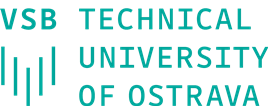The eighth edition of the NanoOstrava 2023 conference, traditionally organised by the CEET Centre for Nanotechnology at VŠB-TUO, started on Tuesday with the subtitle Energy and Environment.
More than 100 participants during the three-day event will focus on the issues of nanotechnology, nano- and advanced materials and their applications from medicine, through the environment to industry. For the first time, the conference will be held in the industrial backdrop of the Lower Vítkovice area.
“I am glad that we are meeting in this place, which is symbolic for us. Many of our researches and projects are heading to industry and one of their goals is the development of the region, including the upcoming REFRESH project. I am glad that our Centre for Nanotechnology is a pioneer in nanomaterials and nanotechnology research in this region, as evidenced by this conference,” said Daniela Plachá, CNT director and conference president.
The conference was held for the first time in 2008, with last year’s conference being held online due to the covid-19 pandemic. Its importance was also appreciated by the Rector of VŠB-TUO Václav Snášel.
“We have three research directions at the university – energy, materials research and IT. The NanoOstrava 2023 conference focuses on two of them, which is why it is very important for us. Nanotechnologies are extremely useful both in energy research and in actual applications in industry and other areas,” said Václav Snášel, Rector of VŠB-TUO.
The focus on energy and the environment not only responds to current global challenges, according to the organisers. “I am very proud that the main organiser of the conference is the Centre for Nanotechnology, which is one of the components of CEET. We are all looking forward to a new energy future and there are many challenges ahead. That is why every conference and every expert meeting is important, as it is from such platforms that new ideas, collaborations and solutions can emerge and accelerate. I wish the conference success,” said CEET Director Stanislav Mišák at the beginning of the conference.
As in previous years, the conference is attended by prominent scientists from home and abroad. The plenary lecture was given by Paolo Fornasiero, a world expert in electrocatalysis and catalysis from the University of Trieste, on the topic The metal/non metal trajectory in sustainable chemistry. “We have only one planet and limited resources. At the same time, we know that we need more and more energy. Therefore, we need to reduce the amount of certain metals used in catalytic processes and look for new approaches. Single-atom engineering can be very helpful in this,” said Fornasiero, among others. Radek Zbořil from CNT CEET VŠB-TUO then presented the possibilities of this groundbreaking scientific approach.
Invited lectures were or will be given by, for example, Jagadeesh Rajenahally from the Leibniz Institute for Catalysis in Rostock, Germany, as well as Mark H. Rümmeli from Soochow University. At the same time, top domestic scientists will present their work, including the winner of the Czech Head and Neuron awards, theoretical chemist Pavel Hobza, tissue engineer Lucie Bačáková from the Institute of Physiology of the CAS, and chemist Dana Nachtigallová from the Institute of Organic Chemistry and Biochemistry of the CAS. .
Among the participants there are also representatives of the Faculty of Materials Science and Technology of VŠB-TUO. “We have long been cooperating with the CEET Centre of Nanotechnology at VŠB-TUO and a number of scientific works have been created in mutual cooperation. We consider it very important, because science goes beyond the boundaries of an individual, one department and one focus. That is why we are glad that we can share knowledge and experience in the field of materials research. We also have a common field of study, so we fulfil the university’s mission in educational and research activities,” said Jozef Vlček, Vice Dean for Cooperation with Industry of the Faculty of Materials Science and Technology of VŠB-TUO.
This year the conference will be open not only to scientific institutions but also to the region. Three Ostrava high schools have also been invited – the Academician Heyrovský Secondary School of Chemistry, Matiční Gymnasium and Wichterl Gymnasium, two of whose students will even present their work developed within the framework of the SOČ.


